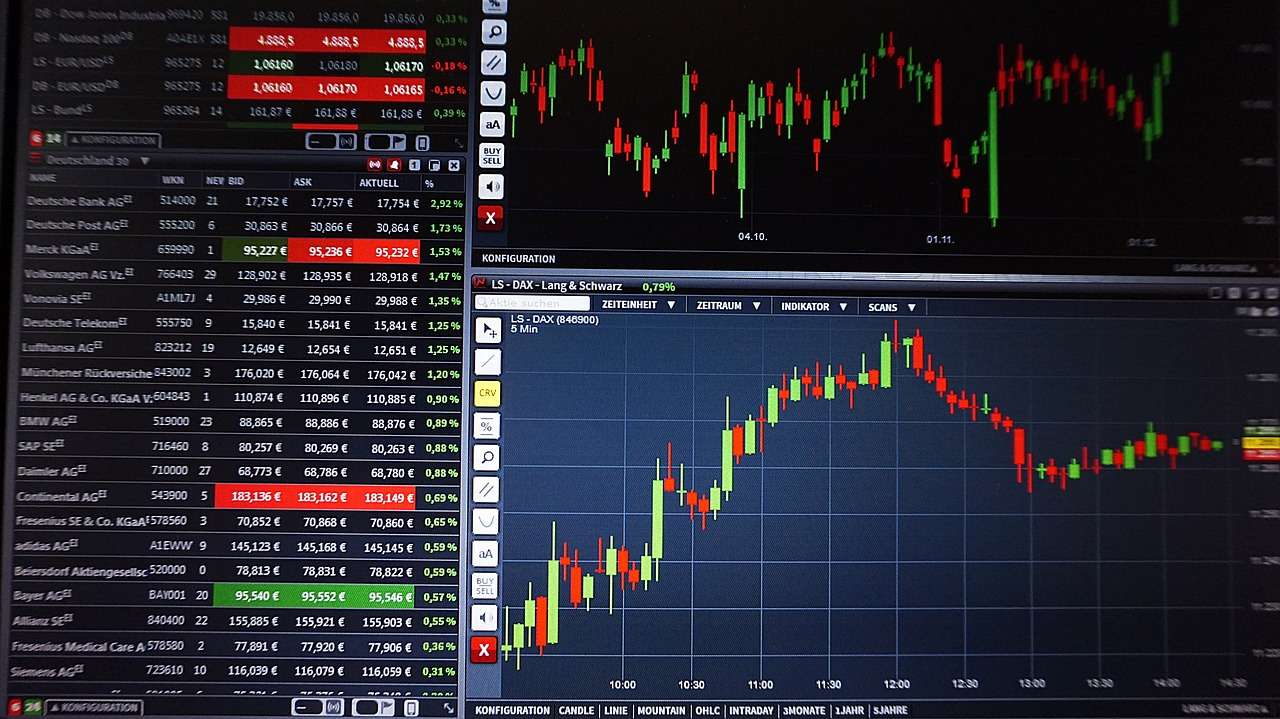
Day trading is a type of trading strategy where individuals buy and sell financial instruments within the same trading day, with the goal of profiting from short-term price fluctuations. Traders typically do not hold positions overnight, aiming to take advantage of intraday price movements.
An Array of Intraday Strategies Employed by Day Traders
Scalping: Scalpers engage in rapid-fire trading, executing a flurry of quick trades to harness minor price fluctuations. Their goal is to harness the nuances of bid-ask spreads and exploit brief imbalances in supply and demand.
Range Trading: Masters of range trading excel at pinpointing distinct price ranges where assets fluctuate. They seize opportunities by buying at lower boundaries and selling at upper thresholds, capitalizing on oscillations within these confines.
News Trading: News-driven traders pounce on pivotal news events or earnings releases that trigger substantial price volatility. Their goal is to harness the initial turbulence caused by such announcements to yield potential gains.
High-frequency trading (HFT): High-frequency trading (HFT) involves rapid, automated transactions using complex algorithms. While boosting market efficiency, it sparks debates about fairness, stability, and regulatory challenges.
The Controversy Surrounding Day Trading
Day Trading has a big argument going on about it. Some people say it’s a good way to make money fast because you can buy and sell things quickly. But others say it’s really risky and you could lose a lot of money, especially if you don’t know what you’re doing.
One problem is that day trading doesn’t have a lot of rules, so some people might do things that aren’t fair. Also, because it happens so fast, some traders might get carried away and make bad decisions.
Another issue is that day trading can make the prices of things jump around a lot. This can confuse the regular ups and downs of the market. Some folks worry this could be a problem for everyone who invests.
There are also rules that say you can only do a certain number of day trades if you don’t have a lot of money in your account. Some like these rules for safety, but others think they’re too limiting.
In the end, the controversy about trading shows that while it might offer quick rewards, it’s important to be careful and know what you’re getting into. It’s a debate that shows how making money in a hurry can come with some big challenges.
Initiating a Day Trader’s Journey: Getting Started
Embarking on the path of a day trader begins with essential steps. First, educate yourself about markets, trading strategies, and risk management. Choose a reliable broker and create a trading account. Practice using demo accounts to hone your skills.
Develop a trading plan outlining your goals, strategies, and risk tolerance. Utilize technical analysis tools to identify potential trades. Start with a small amount of capital you can afford to lose and gradually increase as you gain experience.
Learning and Practicing in the Market: Knowing and Trying
When you start in the market, it’s important to learn and practice. First, you gather knowledge about how things work, like what to buy and sell. Then, you try doing it with a small amount of money to see how it goes.
Learning involves understanding how prices move and how to make good choices. You can read about it or watch videos to get the hang of it. Next, you practice with a demo account. It’s like a game where you use pretend money to see if you can make the right decisions.
Once you feel more confident, you can use a real trading account with a small amount of money. This is where the trying part comes in. You start making actual trades, but you still need to be careful and not risk too much.
Enough Money: Having What You Need
When you start trading, it’s important to have enough money. This money is called “capital.” It’s like the money you use to play the trading game. Having sufficient capital means you can make trades without worrying too much about losing all your money. It’s like having enough coins to keep playing a video game. So, before you start trading, make sure you have enough capital to play the trading game and take some risks along the way.
Ways to Trade Every Day
Trading every day involves using different approaches to buy and sell things like stocks or currencies. Here are some ways people do it:
- Following Trends: This means watching how prices move up or down and making trades based on those patterns. If a price is going up, you might buy, and if it’s going down, you might sell.
- Quick Trading: Some traders buy and sell really fast, trying to make small profits from small price changes. It’s like buying something and selling it for a bit more money just a short time later.
- Watching News: People pay attention to the news to see if something big is happening that could affect prices. If there’s good news about a company, its stock price might go up, and traders might buy it.
- Studying Patterns: Traders look at how prices moved in the past to predict how they might move in the future. They use things like shapes on charts to make their predictions.
- Copying Others: Some traders follow what successful traders do. They might copy their trades in the hope of making the same profits.
|
Strategy Breakdown |
||
|
Type |
Risk | Reward |
| Swing Trading | High | High |
| Arbitrage | Low | Medium |
| Trading News | Medium | Medium |
| Mergers/Acquisitions | Medium | High |
Discipline
Many people who do day trading lose money because they don’t stick to their own plans. There’s a saying, “Plan the trade and trade the plan.” This means you need to be disciplined. To make money, day traders want stocks that move a lot during the day. This could be because of things like company news or how people feel about the stock. Traders also like stocks that are easy to buy and sell without changing the price too much. If the price goes up, they might buy. If it goes down, they might sell to make money. No matter how they do it, day traders want stocks that move a lot.
The Dangers of Day Trading
Day trading comes with risks that you should know about. Here are some important things to consider:
- Losses: Day trading involves buying and selling quickly, which can lead to losses if the market moves against you. Not every trade will make money.
- Emotions: Quick changes in prices can make you feel stressed or excited. Emotions might affect your decisions and lead to mistakes.
- Lack of Knowledge: Without proper understanding, you might make bad choices. It’s important to learn about the market and trading strategies.
- High Costs: Frequent trading can lead to high fees, like commissions and spreads, which can eat into your profits.
- Time Commitment: Day trading requires constant monitoring of the market, which can be time-consuming and stressful.
- Addiction: The fast-paced nature might make some people addicted to trading, leading to more risks.
- Regulations: There are rules for day trading, like pattern day trader regulations. Not following them could limit your trading.


